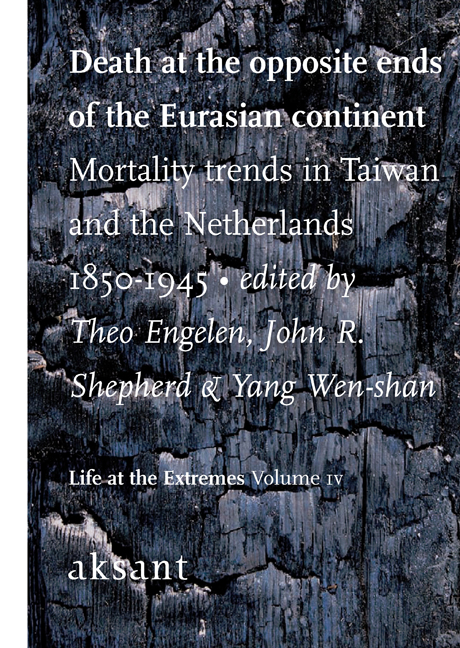 Death at the Opposite Ends of the Eurasian Continent
Death at the Opposite Ends of the Eurasian Continent Published online by Cambridge University Press: 22 January 2021
Introduction
This paper adopts an anthropological approach to the analysis of an unexpected demographic pattern. Our statistical findings reveal an extraordinarily high illegitimate birth rate and high female infant mortality rate in Penghu in the years 1906-1945. To anyone who grew up in Penghu or has studied the history of Penghu, the large proportion of illegitimate children in Japanese-ruled Penghu comes as a shock. Since the Qing dynasty, Penghu had been renowned for its strict and conservative norms governing male - female relationships. The historical records of Penghu stand out for their long lists of chaste women: a gazetteer compiled in 1832 lists 117 chaste Penghu women, and another completed in 1893 lists 195 chaste women (Jiang 1832: 31-51; Lin 1893: 256-300). These women, primarily virtuous widows who singlehandedly reared their children to adulthood, are surprisingly numerous, given Penghu's small population of 60-70 thousand people. How could a place renowned for its many chaste women be found to have a high rate of illegitimate births one or two decades later? The first part of this paper aims to solve this puzzle. The detailed data of the Japanese household registers give us an opportunity to cross-check our local informants’ explanation for the pattern. After our first hypothesis proves wrong, we finally conclude that the most likely cause of the high illegitimate birth rate of Penghu is a form of “marriage” adopted by daughters of poor families, tacitly consented to by society, but not officially recognized. As for the high female infant mortality rate, most Penghu natives and scholars in the field of Penghu's history do not find it surprising because Penghu was notorious for its practice of female infanticide in the Qing Dynasty. However, our registration data do not support the hypothesis that female infanticide led to the high female infant mortality rate in Penghu. Inspired by Arthur Wolf's finding that adoption raised the risk of death for young girls elaborated in his 1995 work, we examine our household registration data, which testifies that the high adoption rate of female infants in Penghu could be one of the reasons for its high female infant mortality rate.
To save this book to your Kindle, first ensure [email protected] is added to your Approved Personal Document E-mail List under your Personal Document Settings on the Manage Your Content and Devices page of your Amazon account. Then enter the ‘name’ part of your Kindle email address below. Find out more about saving to your Kindle.
Note you can select to save to either the @free.kindle.com or @kindle.com variations. ‘@free.kindle.com’ emails are free but can only be saved to your device when it is connected to wi-fi. ‘@kindle.com’ emails can be delivered even when you are not connected to wi-fi, but note that service fees apply.
Find out more about the Kindle Personal Document Service.
To save content items to your account, please confirm that you agree to abide by our usage policies. If this is the first time you use this feature, you will be asked to authorise Cambridge Core to connect with your account. Find out more about saving content to Dropbox.
To save content items to your account, please confirm that you agree to abide by our usage policies. If this is the first time you use this feature, you will be asked to authorise Cambridge Core to connect with your account. Find out more about saving content to Google Drive.